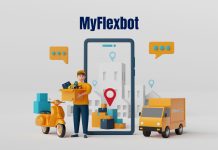The Internet of Things has evolved from being a technology to a widespread phenomenon. It has come a far away from mere networking to establishing itself as an enabler for progress and even sustainability in several industries. The best part about the technology is that even though its foundation is not quite ancient, a decade of work and enhancement in supportive technologies has brought it where it is today.
After all, who would have thought a few decades back that we’ll be weaving the software development life cycle of entire devices around the Internet in the coming time? Today, the global upscale in IoT is bringing more than a million devices together, all interconnected through a common network. These devices are serving the purpose they used to before but also harnessing the best of the Internet network to update themselves, communicate with each other, and a lot more.
IoT for the Common Man
The best experience of the Internet of things has come from the fact that it helps in seamless communication between devices for a particular task. So, let’s say you are creating a digital artwork on one of your devices like a personal computer. But then you have to step out of your house and take a cab to the workplace. While you’d like to utilize the time in the cab many be revisiting your artwork, you might not have got ample time to take a backup of the same.
It is where the Internet of things can kick in! The technology can help in a seamless transition from one device to another without worrying about any manual backups. As a user, this means you can pick up at the exact point where you left off. Not only do you get a distinguished experience but find yourself living in a technologically sound and advanced world.
Now imagine this idea getting extended to things that have remained one of the biggest sources of worry for humans. For example, management of natural resources and making sure they don’t get used up too quickly or all at once. Whether it is water or electricity, we all want to meet our daily needs and live in harmony with nature. In other words, scientists have been for the longest amount of time looking for solutions that can be deployed at an individual’s level and help in tracking and maintaining the optimal level of natural resource usage.
Even the most responsible citizen so far finds it difficult to take care of such issues due to limitations in technology. For example, a device that is being used in a lot of homes is a thermostat for the home. A thermostat uses the power to keep the indoor temperature at an optimum level.
However, regardless fo whether the human is inside their homes or if there is an increase in the number of humans, utilizing the same level of power to maintain a temperature doesn’t sound appropriate. As a result, a lot of power and subsequently natural resources are utilized, without its need in the first place. Even if the citizen living in such an environment in rational and responsible, little can they do anything about it due to the gap in technology and customer experience.
IoT for Sustainability
Thanks to the Internet of things, such gaps are bridging efficiently and creating a space for the customer to finally live up to their duties of preserving the environment. Not only is this the need of the hour but also a technologically sane solution towards the road of progress.
Moreover, as time passes, more and more businesses are moving towards sustainable goals. While making profits is one thing, enterprises also share the responsibility of preserving the natural resources, which is the ultimate investor in any venture. Without the support of the Internet of things, such solutions seem impossible. Even if scientists manage to leverage AI for the purpose, deploying it at an individual’s level still becomes one of the most hassle-filled tasks to date.
Water Management
There is no denying the fact that water is a finite resource. Even though we live on the blue planet, the share of freshwater becomes less and less with each passing day. A majority of industries such as the agriculture and municipality struggle to meet the requirements of water, for crops and ever-growing human needs respectively. But water isn’t something standalone. It is unequivocally connected to energy and the food chain on our planet. Without it, there is a shift in the ecological balance and rapid change in the face of things beyond human control.
However, with advancements in technology IoT, comes into the picture and sorts out most of the water management issues. The giant McKinsey suggests that IoT is one of the most powerful technologies that the world will witness before 2030. IoT will not only be able to increase efficiency but also help accomplish the United Nations’ Sustainable Development Goals around the world.
Statistics suggest that when the analytics of more than 640 IoT deployments were studied, 84% of these were found to be fulfilling the United Nations’ Sustainable Development Goals such as affordable and clean energy, health and well-being, responsible production and consumption among others. This beings energy efficiency even as technological giants plan to bring the world closer through interconnected devices.
The Internet of Things has a strong potential in solving the stringent water management requirements of the modern world. It provides a solution and an effective way to balance the water food energy nexus for sustainable development. For example, Biz Intellia’s smart automatic meter reading solution is powered by IoT. It enables water distributors to effectively manage the water supply. The technology eradicates the need for manual reading by sending a daily reading to the network of receivers forming seamless data sharing and billing networks.
Similarly, on the other fronts, IoT for water sustainability is being used for water sensing, water quality, water databases, monitoring systems, testbeds, and empirical measurements, water modes, and indices, checking water quality and more. The more rapidly these technologies are tested and deployed in real-world scenarios, the better will be its impact on ecological stability and sustainable growth.





















